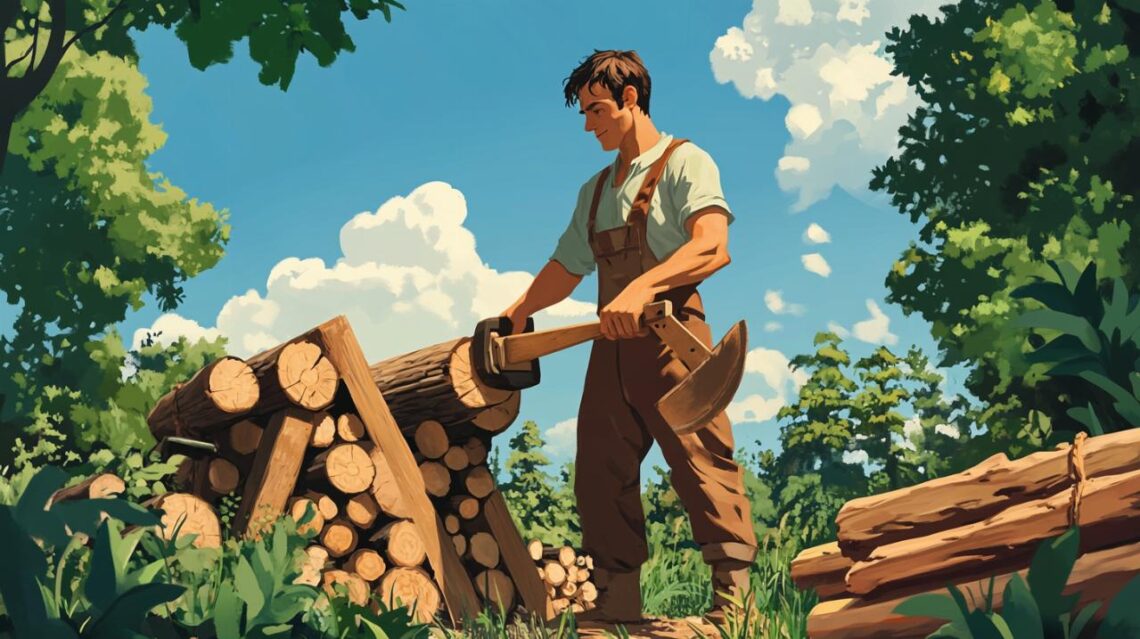
Which Saw Horse Should You Use for Cutting Your Firewood: A Complete Guide for Heavy-Duty Professional Work
Cutting firewood demands both precision and the right equipment to ensure the work proceeds safely and efficiently. Whether you're preparing logs for the winter months or managing timber regularly as part of your trade, investing in a proper saw horse transforms a challenging task into a manageable routine. The market offers a wealth of options, from straightforward trestles to sophisticated designs engineered for heavy-duty applications. Understanding which features matter most and how different models perform under real-world conditions can save you time, effort, and potential injury. This guide examines the critical considerations when selecting a saw horse designed to handle professional-grade firewood cutting, ensuring your investment delivers reliability and longevity.
Essential Features to Look for in a Professional-Grade Saw Horse
When it comes to professional firewood cutting, not all saw horses are created equal. The distinction between a basic model and a professional-grade piece of equipment lies in several fundamental characteristics that directly impact both performance and safety. The first aspect to evaluate is the overall build quality and the materials used in construction. A saw horse intended for regular, demanding use must be manufactured from robust materials capable of withstanding repeated stress and exposure to the elements. Steel construction typically provides the superior strength and durability required for heavy-duty applications, offering resistance to warping and damage that can compromise stability over time.
Robust construction materials and stability requirements
The materials employed in a saw horse's construction determine its lifespan and reliability under pressure. Steel frames offer exceptional rigidity and can endure the forces generated when securing and cutting substantial logs. Beyond the frame material itself, the quality of welds, joints, and fasteners plays a critical role in maintaining structural integrity. A well-constructed saw horse should exhibit minimal flex or movement when loaded, as any instability can lead to dangerous situations when operating cutting equipment. The base design also contributes significantly to stability, with wider footprints and reinforced legs providing better resistance to tipping or shifting during operation. Some models incorporate adjustable feet or legs, which prove invaluable when working on uneven terrain commonly found in outdoor settings. This adaptability ensures the saw horse remains level and stable regardless of ground conditions, reducing the risk of logs rolling or the structure collapsing.
Weight Capacity and Load Distribution for Heavy Logs
Understanding weight capacity is paramount when selecting a saw horse for firewood preparation. Professional models should clearly specify their maximum load capacity, with reputable options handling substantial weights without compromising stability. For instance, saw horses designed for serious forestry work can manage loads reaching 300 kilograms, accommodating even dense hardwood logs without concern. Equally important is how the equipment distributes weight across its frame. A well-engineered saw horse spreads the load evenly, preventing stress concentration at any single point that might lead to failure. The length capacity also deserves attention, as handling longer logs requires extended support to prevent sagging or bending that creates uneven cuts. Equipment capable of securing timber measuring up to six metres in length provides the versatility needed for diverse firewood sources, from smaller branches to substantial tree trunks. The combination of high weight capacity and extended length accommodation ensures your saw horse remains functional across various cutting scenarios, from processing smaller batches to tackling bulk quantities of mixed timber.
Choosing the Right Saw Horse Based on Your Firewood Type and Volume
The specific characteristics of the logs you regularly process should directly influence your saw horse selection. Different wood species present varying challenges, with dense hardwoods like oak requiring more substantial support than lighter softwoods. Similarly, the volume of firewood you prepare determines whether portability or maximum capacity takes priority. A professional who processes multiple cords of wood throughout the season has different requirements compared to someone preparing a modest winter supply. Matching your saw horse to these variables ensures you acquire equipment that genuinely serves your operational needs rather than presenting limitations that hinder productivity.
Matching Saw Horse Height and Design to Different Log Sizes
Working height represents a frequently overlooked yet crucial consideration that affects both comfort and efficiency. A saw horse positioned at an appropriate height allows you to maintain proper posture throughout the cutting process, reducing strain on your back and shoulders during extended sessions. For most users, a height around 750 millimetres provides a comfortable working position that minimises fatigue whilst maintaining control over the cutting tool. However, individual preferences vary based on stature and cutting technique, so considering adjustability can prove beneficial. The design should also accommodate the diameter range of logs you typically encounter. Professional saw horses can secure timber with diameters reaching 360 millimetres, providing adequate clearance and grip for substantial logs. The clamping or securing mechanism must firmly hold logs of varying sizes without requiring excessive adjustment between cuts, streamlining the workflow and maintaining consistent results.
Portability versus fixed installation: what works best for your setup
The decision between a portable or fixed saw horse depends largely on your working environment and operational requirements. Portable models offer flexibility for those who process firewood at different locations or need to move equipment around a property. When portability matters, the saw horse's own weight becomes a consideration, with designs around fourteen kilograms striking a balance between sturdiness and manageability. Compact dimensions, such as 1300 millimetres in length and 500 millimetres in width, allow for transport in standard vehicles whilst still providing adequate working capacity. Conversely, if your firewood operation centres on a fixed location with dedicated space, a heavier, more substantial design might prove advantageous, offering maximum stability without concern for frequent relocation. Some professionals maintain multiple saw horses, using portable versions for fieldwork and more robust fixed installations in workshop settings. This approach maximises efficiency across different cutting scenarios whilst ensuring you always have appropriate equipment regardless of location.
Top saw horse models for professional firewood cutting
 Navigating the marketplace reveals several manufacturers producing saw horses specifically engineered for demanding forestry applications. These brands have established reputations through consistent quality and design innovation that addresses the practical challenges faced by professionals. Examining the offerings from leading manufacturers provides insight into what constitutes best practice in saw horse design and helps identify models that deliver genuine value rather than merely appearing substantial.
Navigating the marketplace reveals several manufacturers producing saw horses specifically engineered for demanding forestry applications. These brands have established reputations through consistent quality and design innovation that addresses the practical challenges faced by professionals. Examining the offerings from leading manufacturers provides insight into what constitutes best practice in saw horse design and helps identify models that deliver genuine value rather than merely appearing substantial.
Comparing leading brands: wolfcraft, wiltec, and tectake options
Wolfcraft has earned recognition for producing robust, well-designed saw horses that balance quality with practical pricing. Their models typically feature thoughtful engineering details that enhance usability, from secure clamping mechanisms to stable base designs. User feedback consistently highlights the durability and reliability of Wolfcraft equipment, making these saw horses popular choices among both professionals and serious hobbyists. Wiltec offers alternatives that frequently appeal to budget-conscious buyers seeking functional equipment without premium pricing. Whilst these models may lack some refinements found in higher-tier options, they provide adequate performance for moderate use when properly maintained and operated within their specified capacities. Tectake produces various forestry equipment including multi-purpose saw horses and log processing tools, with some models incorporating electric power assistance. The diversity in Tectake's range means potential buyers should carefully review specifications and customer feedback to ensure a particular model aligns with their requirements. The Forest Master brand deserves particular mention, offering the Ultimate Saw Horse designed specifically for heavy-duty log holding. This model exemplifies purpose-built equipment, with features including a substantial 300-kilogram weight capacity and the ability to secure timber up to six metres in length. Customer ratings averaging 4.68 out of five based on numerous reviews suggest high satisfaction levels among users who have invested in this equipment.
Value for money: finding quality equipment within your budget
Determining value requires looking beyond initial purchase price to consider long-term performance and durability. A modestly priced saw horse that requires replacement within a season ultimately costs more than a higher-quality option that serves reliably for years. Current market conditions sometimes present opportunities, with quality equipment occasionally offered at reduced prices. For example, professional-grade saw horses originally priced near one hundred pounds might become available for around eighty pounds during promotional periods, representing genuine savings without compromising on quality. Such reductions, sometimes reaching twenty percent, make premium equipment more accessible whilst providing the features and durability essential for professional applications. When evaluating value, consider included warranties as indicators of manufacturer confidence and customer protection. Equipment backed by twenty-four-month warranties demonstrates a commitment to quality that budget alternatives typically cannot match. Delivery considerations also factor into overall value, with suppliers offering next-day service to mainland UK addresses providing convenience that reduces downtime when equipment needs arise urgently. Establishing a relationship with reputable suppliers who specialise in forestry equipment ensures access to knowledgeable advice and reliable after-sales support that enhances your investment's long-term value.
Safety Practices and Proper Usage for Firewood Cutting Operations
Even the finest saw horse cannot guarantee safety without proper operational practices and awareness. Firewood cutting involves inherent risks that demand respect and attention to established safety protocols. Developing consistent habits around equipment setup, log securing, and cutting technique creates a framework that protects against the accidents that can occur when attention lapses or shortcuts tempt during rushed operations. Professional approaches to safety not only prevent injury but also improve cutting efficiency by establishing reliable routines that produce consistent results.
Securing logs properly and maintaining correct working posture
Before making any cut, ensure the log sits firmly within the saw horse's securing mechanism. A properly secured log should not shift or rotate when pressure is applied, as movement during cutting creates dangerous unpredictability. Take time to position logs so the cut section overhangs the saw horse adequately, allowing your saw or chainsaw to complete the cut without contacting the equipment. This positioning requires judgement that develops with experience but fundamentally involves balancing the log's centre of gravity over the saw horse whilst ensuring adequate support on both sides of the intended cut. Your posture whilst cutting deserves equal attention. Stand with feet positioned to provide stable balance, avoiding reaching or stretching that compromises control. The saw horse height should allow you to work with your back straight and shoulders relaxed, reducing fatigue that leads to lapses in concentration. When using chainsaws, maintain firm grip with both hands and position yourself to one side of the cutting line rather than directly behind the saw, providing clear escape routes should kickback occur. Regular breaks during extended cutting sessions help maintain focus and physical readiness, as fatigue significantly increases accident risk.
Essential Safety Kit and Best Practices for Chainsaw Users
Chainsaw operation demands comprehensive personal protective equipment regardless of experience level. Appropriate safety gear includes protective chaps or trousers designed to stop chain movement, steel-toed boots with good ankle support, heavy-duty gloves that maintain grip whilst protecting hands, and eye protection that shields against flying debris. Hearing protection becomes essential during extended chainsaw use, preserving long-term auditory health against the damaging noise levels these tools generate. A properly fitted helmet with integrated visor and ear protection provides comprehensive head and face shielding whilst remaining comfortable during prolonged wear. Beyond equipment, established best practices include maintaining your chainsaw according to manufacturer specifications, ensuring chains remain sharp to reduce binding and kickback risks, and checking all safety features function correctly before each use. Never operate cutting equipment when fatigued, distracted, or under conditions that compromise visibility such as poor lighting or adverse weather. Keep your work area clear of obstacles and ensure bystanders maintain safe distances, as ejected wood chips and falling log sections present hazards beyond the immediate cutting zone. Taking time to properly prepare your workspace and equipment before beginning work establishes the disciplined approach that keeps professionals safe throughout demanding careers in forestry and timber processing.





